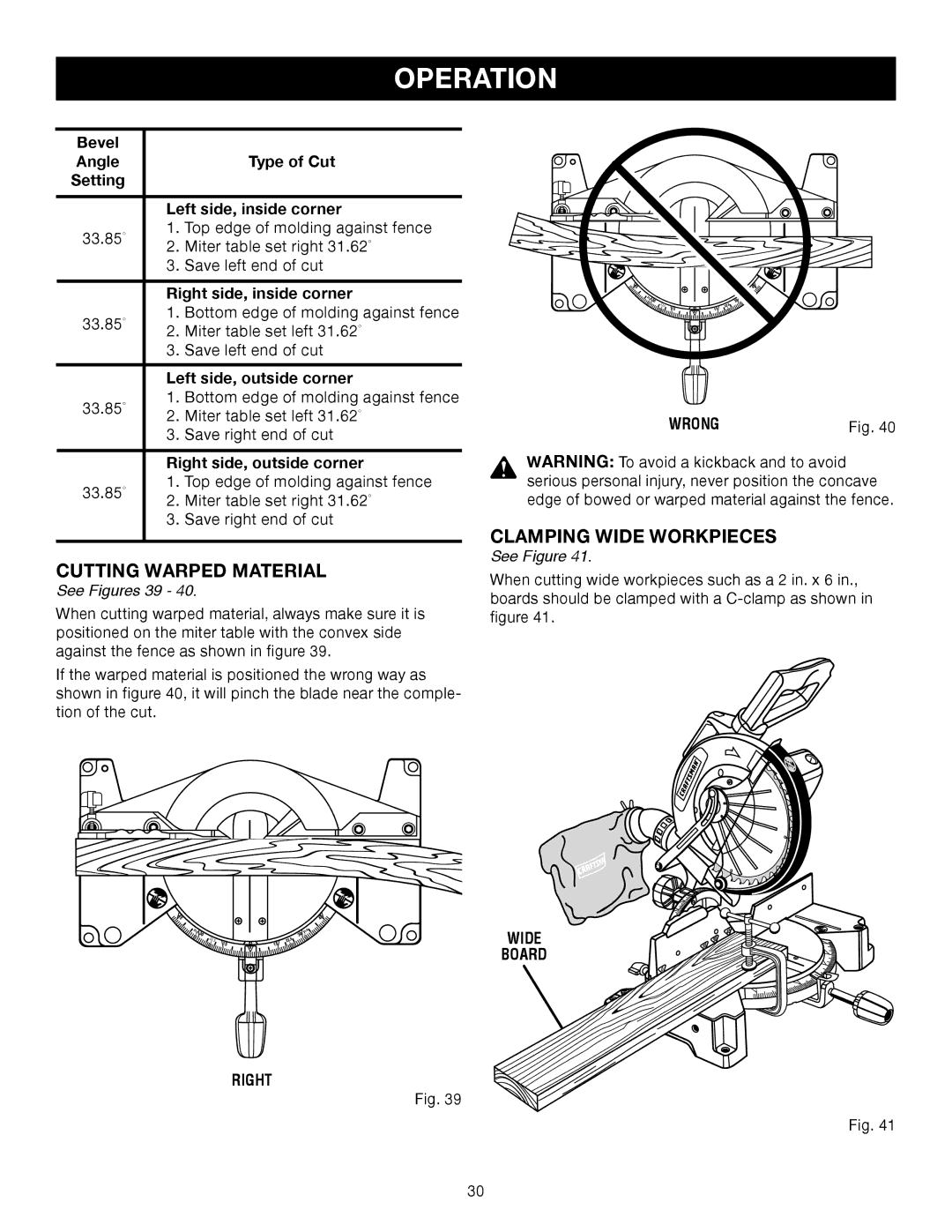
OPERATION
| Bevel |
|
|
| Angle |
| Type of Cut |
| Setting |
|
|
|
|
| |
|
| Left side, inside corner | |
33.85° | 1. | Top edge of molding against fence | |
2. Miter table set right 31.62° | |||
|
| 3. | Save left end of cut |
|
|
| |
|
| Right side, inside corner | |
33.85° | 1. | Bottom edge of molding against fence | |
2. Miter table set left 31.62° | |||
|
| 3. | Save left end of cut |
|
|
| |
|
| Left side, outside corner | |
33.85° | 1. | Bottom edge of molding against fence | |
2. Miter table set left 31.62° | |||
|
| 3. | Save right end of cut |
|
|
| |
|
| Right side, outside corner | |
33.85° | 1. | Top edge of molding against fence | |
2. Miter table set right 31.62° | |||
|
| 3. | Save right end of cut |
|
|
|
|
CUTTING WARPED MATERIAL
See Figures 39 - 40.
When cutting warped material, always make sure it is positioned on the miter table with the convex side against the fence as shown in figure 39.
If the warped material is positioned the wrong way as shown in figure 40, it will pinch the blade near the comple- tion of the cut.
� | � |
| ���� |
WRONG | Fig. 40 |
WARNING: To avoid a kickback and to avoid serious personal injury, never position the concave edge of bowed or warped material against the fence.
CLAMPING WIDE WORKPIECES
See Figure 41.
When cutting wide workpieces such as a 2 in. x 6 in., boards should be clamped with a
� | � |
| � |
| ��� |
RIGHT
WIDE
BOARD
Fig. 39
Fig. 41
30
